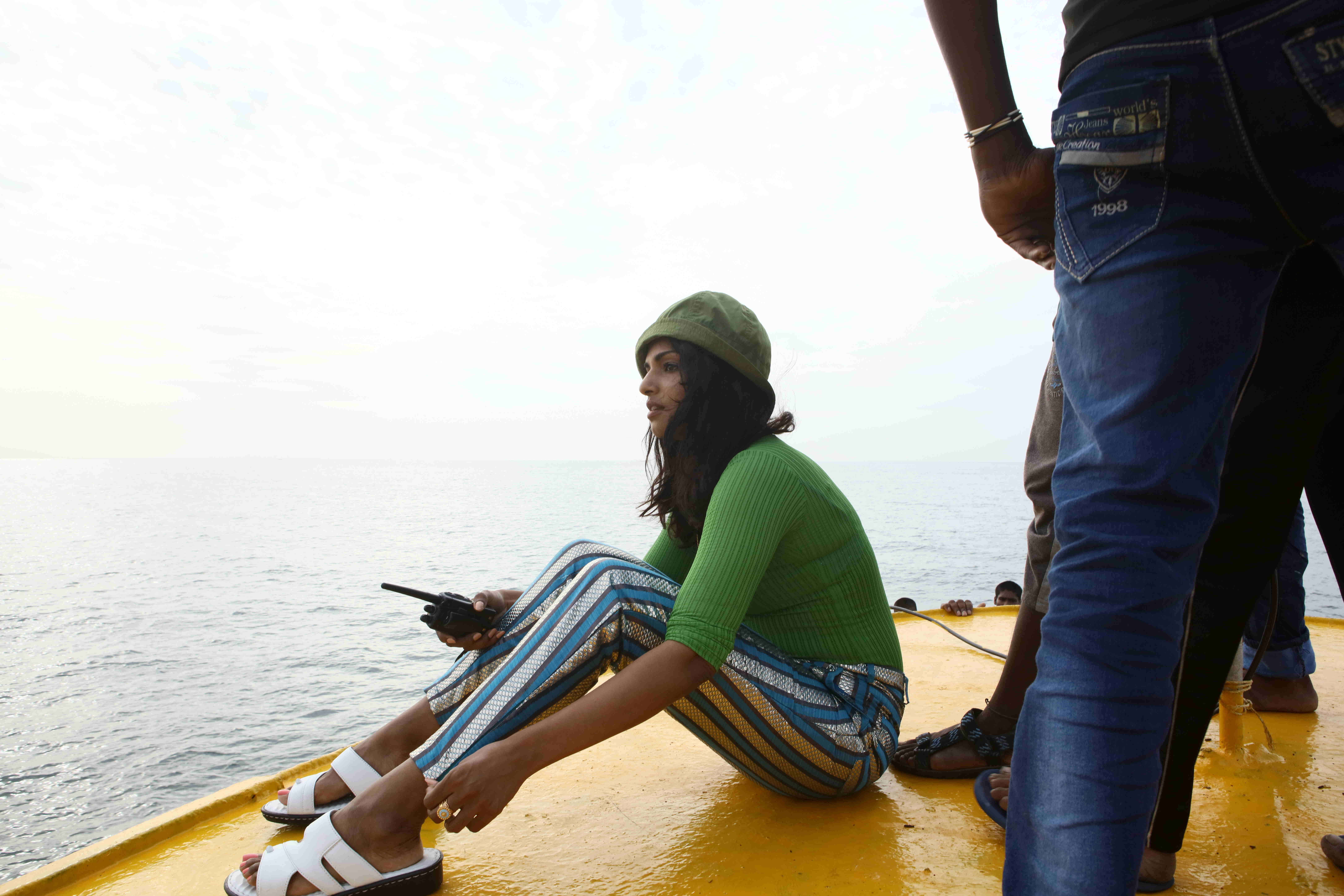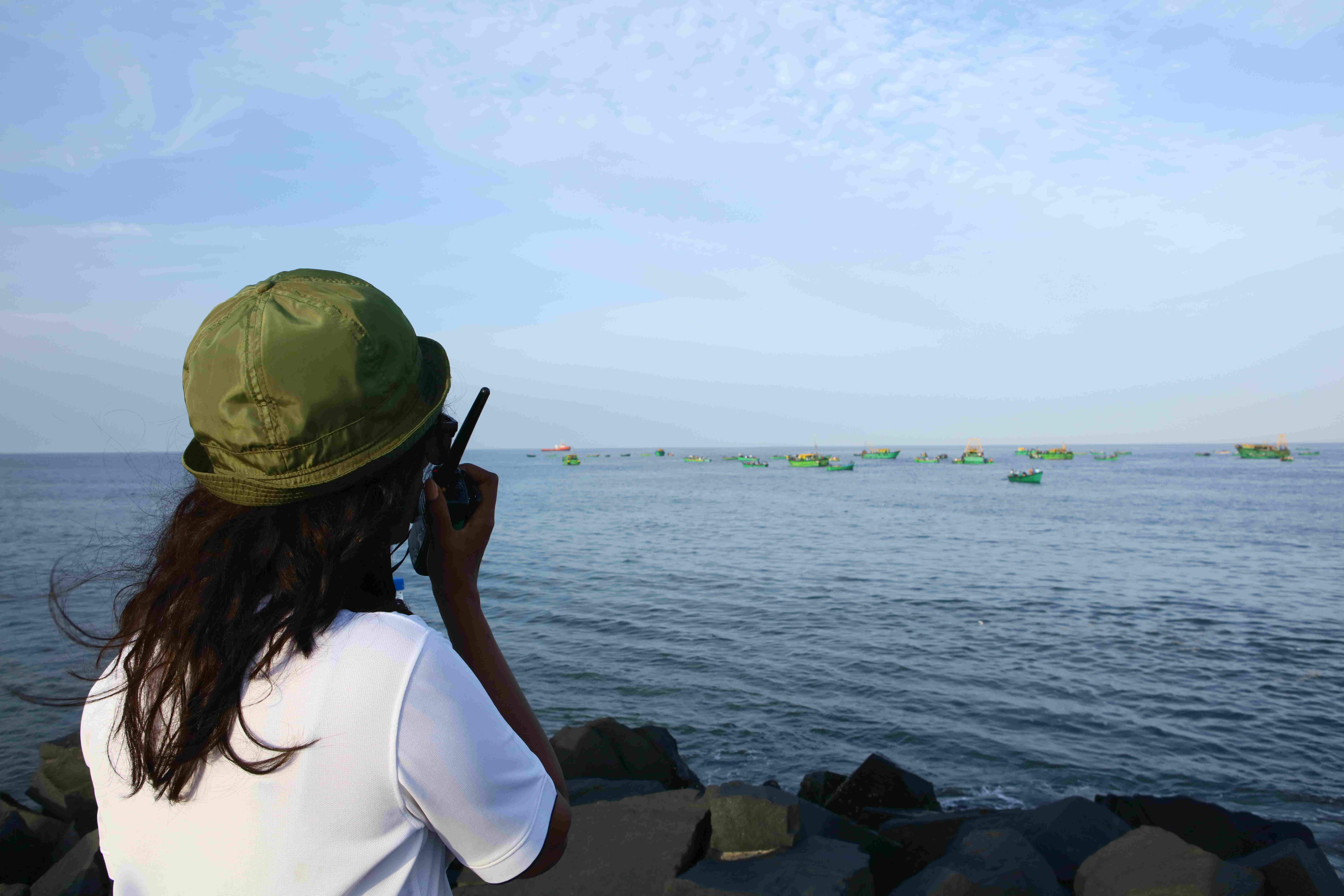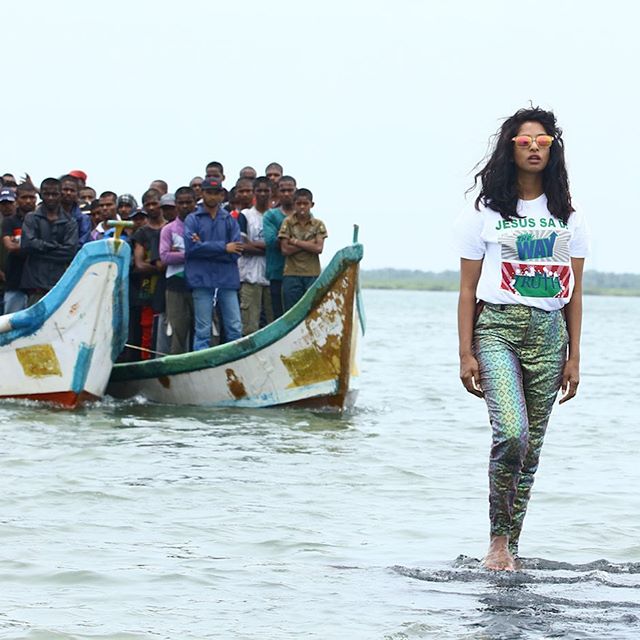 |
| Photograph MIA Universe |
Tamil Guardian exclusive interview with rapper and musician M.I.A. following the release of her latest track and video on the 27th November 2015.
Sometimes friends of M.I.A. (aka Mathangi “Maya” Arulpragasam) tell her, just make what you want to make. “But every time I make something, this is what comes out,” she says. “I can’t help it.” She’s talking about her latest video and track of course, ‘Borders’. It’s controversial, political and topical, but to Maya, the British Tamil once-refugee, the subject matter is not novel.
The self-directed video features the 40-year-old musician and multimedia artist accompanying scores of young, brown men in iconic scenes of migration and fleeing – packed on to fishing boats, climbing razor wire fences.
 |
Borders/What’s up with that? She asks in the track.
So, your video, what’s up with that, we ask her.
“I think the video is just to humanise the people and just show them,” she muses. “Not to really have any opinions on them but to show them for the people they are.”
The people she’s referring to are those we’ve been seeing for most of the latter half of this year, the rolling footage of migrants and refugees in what has been repeatedly dubbed Europe’s ‘migrant crisis’.
Maya has been paying attention to the positive and negative reactions to her video, which she says represent an extreme divide and the “misrepresentation of migrants and refugees”. It’s interesting, she says, that in some extreme cases, “the sort of ideas being planted, are that just letting refugees in is somehow going to end up in white genocide.”
“It seems every day these stories are going out: where somebody is stuck, there are people dying, boats crashing on the rocks, people drowning. It’s women and children too, but the way we’re approaching the subject…”
To Maya, “humanity” and “kindness” are “getting a bit lost.”
She’s mentioned women and children, but their absence in the Borders video is conspicuous.
The singer admits that she wanted to visualise what is to some, a nightmare scenario. “They say it’s a lot of men coming over – it’s like that’s the scariest image you can possibly create.” She does that a lot, apparently. “I do that a lot when I actually take somebody’s comments and make it into a visual to say this is what that looks like.”
“The reality of the situation is that there are families, children, old people, young people, men and women – it’s all across the board. They’re genuinely running away. They’re fleeing bombs. It’s not as simple as ‘yeah it’s actually swarms of men coming over, like armies’ – is it?”
Subversive imagery aside, Maya jokingly admits to the practicalities of an all-male cast for this particular shoot. “It just made things easier when we were actually shooting on a boat that boys can pee over the side of the boat.”
On a serious note, “I wasn’t taking on the gender issue at all,” she confesses, “even though that’s like the biggest issue this year.”
To Maya, the gritty existential battle of reconciling her experiences as a refugee has taken precedence over gender issues.
“I don’t have the privilege of backing the female empowerment issue that everyone backs,” she says. “As an artist I’m still dealing with being a refugee, to speak about the things that I speak about as somebody that fled war. Let’s not even get on to the fact that I’m a woman, I haven’t even got past the first hurdle.”
She can’t help making what she makes because her political experiences are so deeply rooted in her artistic consciousness.
“I’ve always been vocal from day one about the fact that I was a refugee and not a migrant. There was no secret. I actually left [Sri Lanka] because we were bombed and shot at. If I had a choice I would’ve stayed. I didn’t follow a dream saying I’m going to go to England and become a pop-star. I was actually genuinely fleeing from a war and I’ve not shied from that.”
 |
| Photograph MIA Universe |
We need your support
Sri Lanka is one of the most dangerous places in the world to be a journalist. Tamil journalists are particularly at threat, with at least 41 media workers known to have been killed by the Sri Lankan state or its paramilitaries during and after the armed conflict.
Despite the risks, our team on the ground remain committed to providing detailed and accurate reporting of developments in the Tamil homeland, across the island and around the world, as well as providing expert analysis and insight from the Tamil point of view
We need your support in keeping our journalism going. Support our work today.
For more ways to donate visit https://donate.tamilguardian.com.

